Wine, liquor, spirits of all sorts; these are some of the finest gifts you can purchase while travelling. Many regional varieties of alcohol from around the world are sold as souvenirs, as gifts, as mementos, or just as something nice to bring home. That, though, is always the problem, isn’t it? Bringing your purchased beverage home. How should you pack it away for safe travel, so you minimize the risk of a spill, a broken bottle, or another disaster?
Be Aware of Travel Restrictions
There are three major restrictions you need to concern yourself with when traveling with alcoholic beverages.
The first is transit authority regulations. What type of transportation are you taking? If you’re traveling via car or truck, you can fairly easily pack away your beverage and have nothing to worry about unless you’re crossing an international border. For trains, you might find more restrictions. Amtrak prohibits all except “small amounts of food and drink” onboard, but you can often pack something away securely in your luggage without issue so long as it doesn’t break and cause a problem.
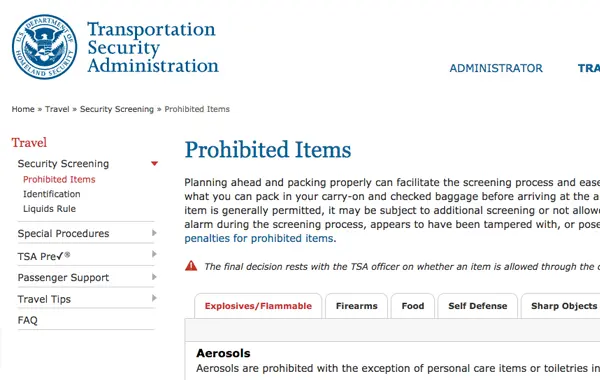
Air travel is the most common, and the most regulated. We’re all familiar with the TSA’s regulations on carry-on liquids, so there’s no chance of sneaking a bottle on board in your carry-on. You’ll have to pack it away in your luggage, and even then, you have limitations. From the TSA blog:
- You cannot bring anything over 140 proof, including 95% grain alcohol and 150 proof rum, in your checked luggage.
- Alcohol with an alcohol content between 24% and 70% is allowed in checked luggage, up to five liters per person, so long as it’s packaged in a sealed bottle or flask.
- Anything under 24% alcohol content is not subject to regulation according to hazardous material guidelines.
If you’re bringing alcohol from, say, Europe to America, you may be subject to other regulations depending on the type of alcohol. You’ll have to research the restrictions based on the locations you’re traveling and the type of alcohol you’re trying to bring into the country.
Another regulation you have to worry about is weight. Checked bags generally have to be under 50 pounds before you’re charged extra, and a typical 705ml bottle of liquid will weigh around 3 pounds. Carrying too much booze in your luggage can put you over the weight limit and leave you with steep fees.
Packing the Bottles
There are two ways to go about packing a bottle of alcohol in your luggage. The first, covered here, is to do so with just the supplies you can find at any common corner store, or what you already have with you. The second is to purchase specific products designed to assist with safe packing, which you can find in the following section.
There’s one primary goal with packing alcohol, and that’s to keep it from spilling. A spill can be devastating. It can at minimum stain your clothing and ruin other items you’ve packed. In worse cases, it can ruin your luggage as well, or even affect the luggage of other passengers. It’s possible your bags will be set aside or discarded if they cause an issue in a layover. The reason for the 140 proof limit is for liability purposes, as well; anything stronger has enough alcohol to cause hazard issues in the enclosed spaces of a cargo compartment.
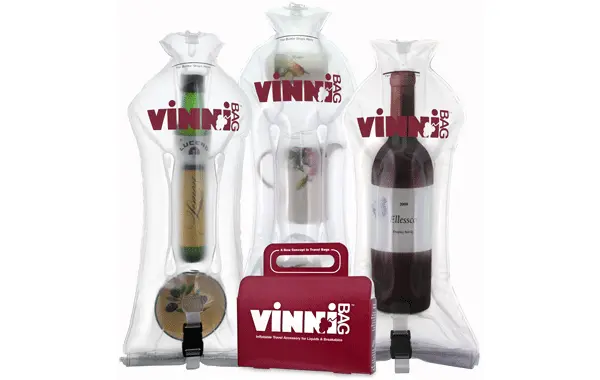
As such, every tip below is designed to help minimize the amount of damage a bottle can take, to prevent breaking, or to help protect your luggage in the event of a spill. You’ll never encounter a broken bottle if all goes well, but it’s still better to be safe than sorry.
The first thing you’ll want to do is prepare the bottle itself. You can use tape to make sure the cap is secure. Some people suggest using plumbers tape, though that can be slightly overkill if you don’t have any on hand. Regardless of whether you use tape or not, you should put the bottle inside a plastic bag with a zipper seal, something designed to trap moisture. Squeeze all of the air out of this bag before you seal it completely, to minimize the chances of it popping open.
We recommend sealing the bag as well as possible using tape, or even double-bagging, because leaks are very common. You’re not likely to lose a whole bottle to a leak on a plane, but you do need to remember that plane cargo holds tend to be lower pressure than the typical sea level atmosphere. The pressure differential between the inside of the bottle and the outside can make some of the contents leak out even without breaking the seal of a cork or an unopened screw cap.
At this point, you want to secure the bottle with a little padding. For smaller bottles – and for people with larger feet – you can slide the bag-wrapped bottle inside a shoe you pack away. This has the additional benefit of helping contain minor leaks within a shoe and shoe bag in your luggage, the latter of which is already designed to help minimize the dirt from shoes making its way throughout your clothing and other items.
If you don’t have large enough shoes, or you’re not packing additional shoes away in your luggage, you can still use a shoe bag, but it won’t provide much padding or protection. Instead, wrap a couple of layers of bubble wrap around the bottle. If it works for fragile items in the postal service, it will work for a bottle in your luggage, right? Two or three layers, depending on the style of bubble wrap, should do it. Secure them with tape to make sure it doesn’t all unravel inside your luggage and expose the bottle to direct percussion or damage.
Packing the Luggage
Now that your bottles are prepared, you need to properly pack your luggage. Again, padding is the name of the game. Thankfully, the majority of the contents of your suitcase are going to be clothing and cloth items, which work wonderfully as padding for your bottles.
The first thing you want to do is pad the outer edges of your suitcase. All six sides of the typical rectangular suitcase should have a layer or three of clothing. You’re essentially putting your bottle at the middle, the core of your luggage, where it has the maximum amount of padding it can get from any angle. You can wrap a couple of shirts or a pair of pants around the bottle itself, though the bubble wrap should do a good enough job on its own.
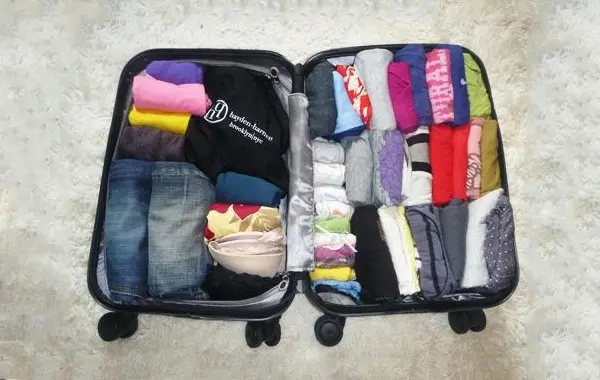
What you want to avoid is putting your bottle up against one edge or another of the luggage itself. For hard luggage, like a rigid suitcase, this leaves the bottle free to rap against the stiff interior of the suitcase when it’s moved around loading and unloading from a plane. For soft luggage, you have the same issue with the hard surfaces of other rigid luggage or the surface of the plane, the loading cart, the storage bay, and anywhere else your luggage may be stored. The world is full of hard, unrelenting surfaces, and airline workers don’t take particular care with any piece of luggage. You don’t want them to toss your luggage into the hold of a plane, then toss someone else’s rigid case right on top, breaking your bottle in the process.
You may want to organize the interior in terms of value. Items closer to the bottle should be lower value or more waterproof materials; things that won’t be ruined or will be easily replaced should the bottle break, the bag tear, and the contents leak throughout. Harder to replace items, more valuable items, and easily ruined items like papers and books should be packed away to the sides. You might even consider packing them away in plastic bags of their own, just to further protect them in the case of an accident.
You will also want your luggage to be packed fully. The more room you have in your suitcase, the more leeway there is for a bottle to fall back and forth, and the higher the chance there is that it can work its way to the edge of the luggage and impact the ground to break. The less free space there is inside, the less room to maneuver the bottles will have.
Speaking of bottles, what if you’re packing more than one? Each bottle should be packed individually, and they should have padding in between them. It’s up to you whether you would prefer them separated by clothing, foam, sandals, or some other padded item, or if you want them all secured together with layers of bubble wrap, foam, and tape holding them in place. The goal, regardless of your method, is to keep them from banging into each other and breaking mid-flight.
Packing with Products
There are a few good products to help you protect your bottles while traveling.

Now, if all of this messing with tape and bubble wrap is not for you, or you want something specifically designed for the task, you can purchase any of a number of different products to do the job.
- A VinniBag. These inflatable padded bags are designed to fit a variety of different bottle types with variable inflation, and can double as a small pillow in a pinch. When fully inflated they are sealed against liquids, and so they have all of the advantages of all of the above products.
- A sports or boating dry bag. These items are designed to be waterproof, to keep liquids out of them and keep sensitive items dry inside. You can use it in reverse, to keep liquids inside and the rest of your luggage dry.
- A Wine Mummy sack. These sacks are zip-top bags designed to hold a single bottle of wine. They’re sealable, durable, and padded to replace both the zipper lock and bubble wrap in the process above.
- A Jet Bag. These are the most common padded bags for liquids. They’re designed to be padded and sealed, and in the event of a broken bottle, the padding inside is absorbent to contain the liquid and prevent it from contaminating your luggage.
- A WineHug. These padded wraps are inflatable to provide cushioning when in use, but to minimize the space they take up in your trip to your destination, or for storage when otherwise not in use. They’re less sealed than other options, though, so you may need to at least use the zipper bag method to contain any potential spills.
- A Wine Safeguard, Bottle Bubble, or Wine Skin padded sack that works sort of like the Jet Bag, but is itself inflatable. These options all provide the same sort of sealed and padded sack of the first couple options, but with the ability to deflate it to save space like the WineHug.
- A WineCheck. These are larger, more expensive items akin to small suitcases themselves, designed to hold several bottles at once. They’re expensive, but great for carrying a half-dozen bottles or more, so long as you’re not trying to check it onto a plane.
With any of these options, you’ll be able to replace much of the hand-made padding and waterproofing listed up above. Much like all specialized products, however, what you’re doing is replacing time with money. A bag and some bubble wrap is certainly the cheaper option, but if you’re carrying a $300 bottle of wine from Italy, it’s worth investing in something higher quality.
With packing down, all that’s left is to figure out what to buy. Before you know it, you’ll be looking forward to vacations more than ever before.
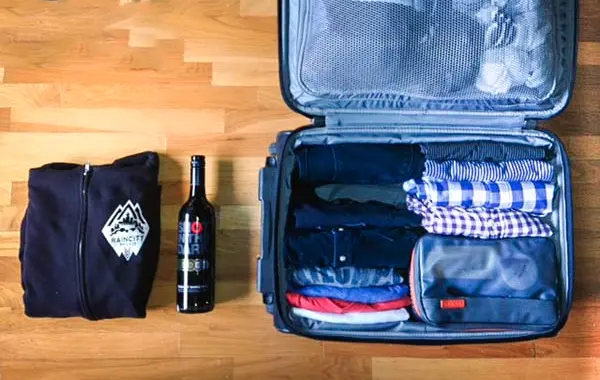













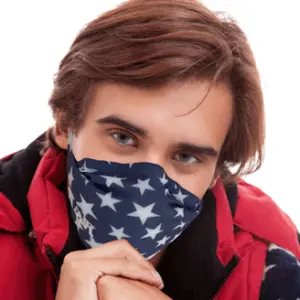





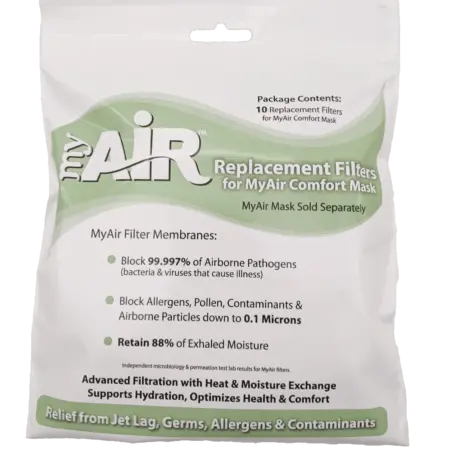
0 Comments